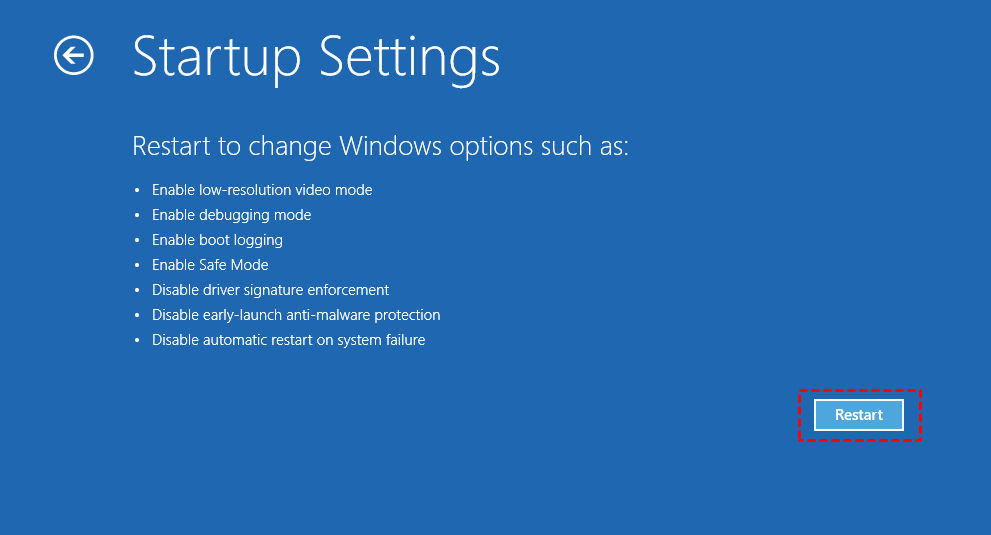
- #RESTARTING COMPUTER WITH AUTOMIZE RUNNING SOFTWARE#
- #RESTARTING COMPUTER WITH AUTOMIZE RUNNING WINDOWS#
What if you want to do more than just return the type of processor in your computer? You can accomplish more powerful results by expanding on WMI's basic functions. When you do so, a pop-up dialog box will display the information that the script enumerates.
#RESTARTING COMPUTER WITH AUTOMIZE RUNNING WINDOWS#
vbs file extension, you can use Windows Script Host (WSH) to process the file. If you create a text format file containing the contents of Listing 1 and save the file with a. The last three lines of the script enumerate the contents of the collection in a For loop. The next line of the script returns instances of the specified WMI-managed resource, Win32_Processor, in the form of a collection.


The first two lines connect to the WMI Service through the WMI Scripting Library "winmgmts:" on the local system "." and open the "\root\cimv2" namespace. The first script, which Listing 1 shows, returns system processor information by performing the three basic functions common to WMI scripts: It connects to the WMI Service, retrieves information about a specific object, and outputs the gathered information. Retrieving data from WMI is just a small example of what you can do with WMI, but it's a good introduction to the potential of WMI scripting.īefore you take the sample scripts from this article and manipulate them to get the information you're after, you'll want to review the basic constructs of WMI scripting. The WMI scripting library is the interface through which scripting tools such as JScript, VBScript, and other languages (e.g., Perl) that support Microsoft ActiveScripting technology easily consume WMI data.įor the purposes of this article, you need to understand only that the sample scripts I describe are WMI consumers that use the WMI infrastructure to get information about, and sometimes control, managed resources. Most computer- and OS-related information resides in the root\cimv2 namespace. The data is categorized into classes, and the classes are logically grouped into namespaces. The CIM repository is a schema that models and manages every piece of data available through WMI. CIMOM acts as a traffic director that handles interactions between WMI providers and consumers. WMI providers, many of which are built into the Windows OS and called standard providers, ensure that managed resources are available and addressed appropriately in WMI. The WMI infrastructure consists of four components: WMI providers, the Common Information Model Object Manager (CIMOM), the CIM repository, and the WMI scripting library. As a result of being based on these standards, WMI provides a consistent, extensible management hook into the Microsoft OSs. WMI is based on the Distributed Management Task Force (DMTF) initiatives, Web-Based Enterprise Management (WBEM), and the Common Information Model (CIM). WMI is Microsoft's implementation of a scalable management standard that's built into Windows XP, Windows 2000, and Windows Me (WMI is also available as an add-on to Windows NT and Windows 9x). For example, you can use a WMI-enabled script to return information about a system component that your existing inventory solution doesn't cover, or you can use WMI to gather information that you need for a rollout analysis without relying on a third-party inventory product.īefore we dig in to a WMI-based inventory solution, let's define WMI, where it came from, and what it can do.

In some cases, using scripts to cull system data directly from Windows Management Instrumentation (WMI) makes the most sense. In some organizations, however, the cost and complexity of deploying an inventory solution that's part of a larger management platform can present insurmountable hurdles to understaffed IT departments.
#RESTARTING COMPUTER WITH AUTOMIZE RUNNING SOFTWARE#
In addition to Microsoft Systems Management Server (SMS), which is the company's tool for hardware and software inventory, several third-party tools are available that bolster SMS's inventory capabilities or operate on their own. Administrators have several choices when selecting tools that collect desktop inventory information for systems migration, auditing, or other purposes.


 0 kommentar(er)
0 kommentar(er)
